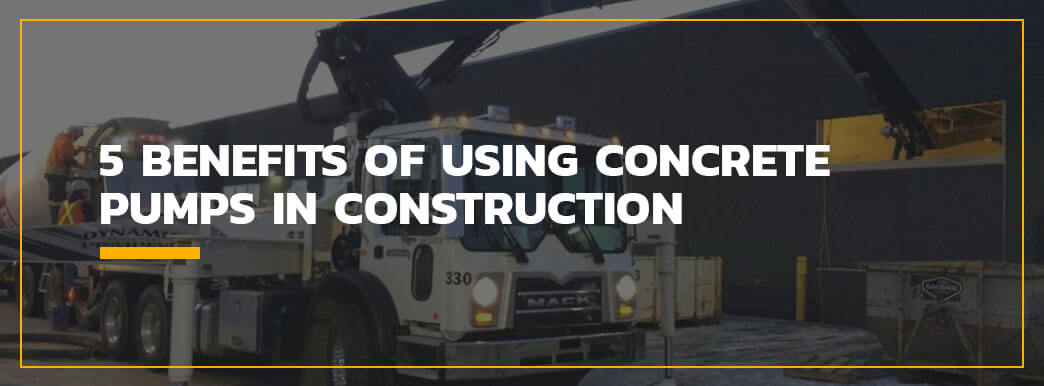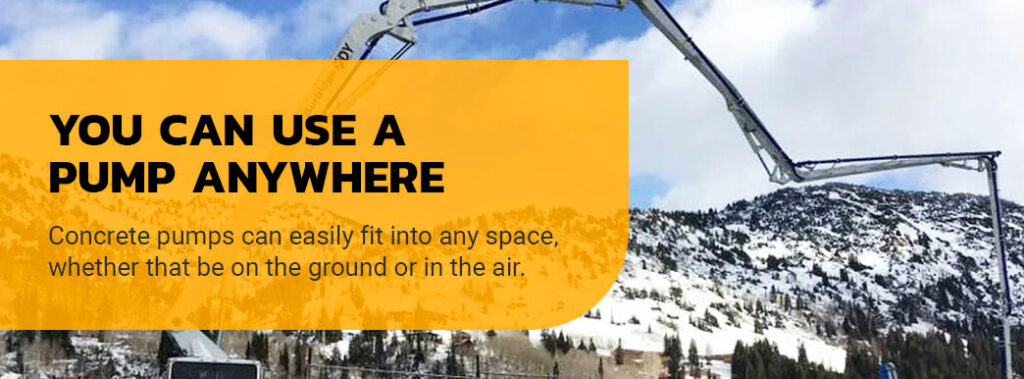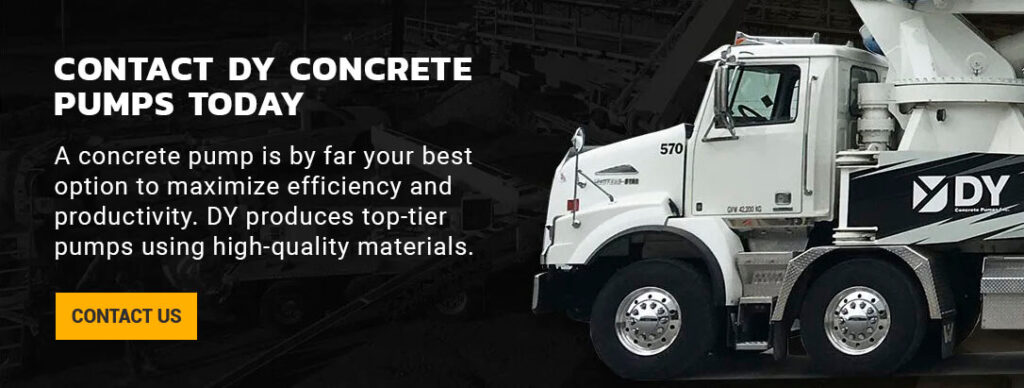5 Benefits of Using Concrete Pumps in Construction
Posted On: 11/10/2021 | Posted by: DY Concrete Pumps

In a fast-paced industry like construction, you need the best equipment in your arsenal. A concrete pump is one of the best pieces of machinery you can choose for your construction site. The pump’s innovative design allows for high productivity levels in short periods of time, so you and your team can keep even large-scale projects on schedule.
In short, concrete pumps are the most efficient option for mixing and pouring concrete. Here’s why.
Different Ways to Pour Concrete
There are three main methods used to pour concrete today — tailgating, concrete buggies and pumping. Here’s a brief rundown of each one:
- Tailgating: Tailgating involves pouring concrete directly into the fill spot using a chute or tailgate. This method works best when there is enough space to park the truck right up against the fill site.
- Concrete buggies: Concrete buggies are vehicles that drive small loads of concrete from the truck to the pour site. Unlike chute trucks or pumps, you need to tow them to the site. They’re helpful when you have limited space available.
- Concrete pumps: Concrete pumps come in two forms — boom pumps and line pumps. Both are useful in tight areas. They use hydraulic pressure to suck liquid concrete out of the hopper and through the pump.
What’s the Difference Between Pump Types?
While both types of concrete pumps are pouring powerhouses, they have different strengths. We recommend that contractors own one of each type to prepare for any situation.
Boom Pumps
Boom pumps use flexible arms called booms to extend up to 57 meters through the air. They connect the truck directly to the delivery site and fold up when not in use. As a result, they’re easy to transport.
A common use for boom pumps is in high-rise construction. Before pumps became available, workers would haul buckets of concrete up to their working level, a time-consuming and labor-intensive process. Boom pumps cut down on that time by depositing concrete directly at the working level.
Line Pumps
Line pumps are mounted on a trailer or truck. This type of pump attaches directly to your hose and allows for greater flexibility and control on ground-level projects than boom pumps.
Because they have lower truck capacity than boom pumps, they’re better for smaller, more precise projects, like residential concrete paths or driveway repairs. They’re also best for projects that mostly require horizontal pumping.
The Top 5 Advantages of a Concrete Pump
Here are the five greatest benefits of using a concrete pump at your construction site.
1. Pumps Offer More Efficient Concrete Pouring
Speed is one of the most significant advantages pumps have over other methods of concrete pouring. Because the piston system works to send a steady flow of concrete through the hose, pouring concrete with a pump truck takes less time and labor than transport methods like wheelbarrows or concrete buggies. In optimal conditions, the whole pour process can take as little as an hour from start to finish.
The accuracy of pumps also saves time. Both boom and line pumps are more precise in pouring than traditional methods because their flexible extensions allow you to place the concrete exactly where you need it. With fewer errors, you’ll be able to produce cleaner work faster and spend less time cleaning up mistakes.
Additionally, by integrating the mixing truck with the pump system, concrete pump trucks save you the time you would have spent waiting for the next concrete batches to be ready.
2. Pumped Concrete Is Stronger
To effectively pour concrete through a chute, you need wetter concrete. The added water can compromise the strength of the concrete, leading to cracks and shrinkage later on. Ultimately, this means your final product will not be able to withstand as much pressure as it could if you’d used drier concrete.
Pumped concrete contains less water than chute-poured concrete. As a result, it can withstand higher amounts of force than chute-poured concrete and is less susceptible to cracking. Your projects will last longer and will need fewer repairs than if you were to use a more traditional mixer-to-chute method.
3. You Can Use a Pump Anywhere

Concrete pumps can easily fit into any space, whether that be on the ground or in the air. Boom pumps in particular are great for hard-to-reach areas because they can extend over large structures like homes and landscaping.
Concrete pumps are also readily transportable because they’re compact when not in use. Pumps fold in one of three configurations:
- Roll-and-fold: The sections of the pump fold one under the next in a curling motion. This configuration requires the most space since it needs room to unfurl.
- Z and ZZ: Pump sections fold in a zigzag formation like the bellows of an accordion. This configuration is perfect for fitting into tight spaces.
- RZ or multifold: The pump has sections that combine both roll-and-fold and Z-type configurations.
With any configuration, you can move the pump where you need to pour.
4. Pumps Will Keep Your Projects Moving
Setting up concrete pumps is quick and easy, requiring fewer employees and less equipment than other methods. After all, you need people to build a chute before you can even begin pouring. You only need two people to operate a pump — one to watch the hose and another to work the controls. And once they’re ready, concrete pumps have a high capacity per hour.
Concrete pumps are also safe to use even in rough weather or dark conditions. You can finish tasks on days when you previously would have had to take a break. A pump’s durability and consistent flow mean you’ll experience fewer delays in construction and less downtime. The pressurized pouring process is much quicker than chute delivery, which relies on gravity to push the concrete down into the pour site. As a result, you’ll have more time to focus on other aspects of your project.
5. Your Construction Site Will Be Safer
Because pumps can extend over large areas, you can keep trucks and other large machinery out of the way of dangerous obstructions. Just park the truck, extend the hose wherever you need the concrete to go and start pouring. The piston-operated system will take care of the rest until your space is filled.
Concrete pumps also require fewer people to operate, reducing site congestion and improving job safety and efficiency.
Contact DY Concrete Pumps Today
A concrete pump is by far your best option to maximize efficiency and productivity. DY produces top-tier pumps using high-quality materials. If you’re interested in quick, effective concrete pouring, contact us online or call us at 844-397-8677 to request a custom quote today.


 1-844-397-8677
1-844-397-8677



